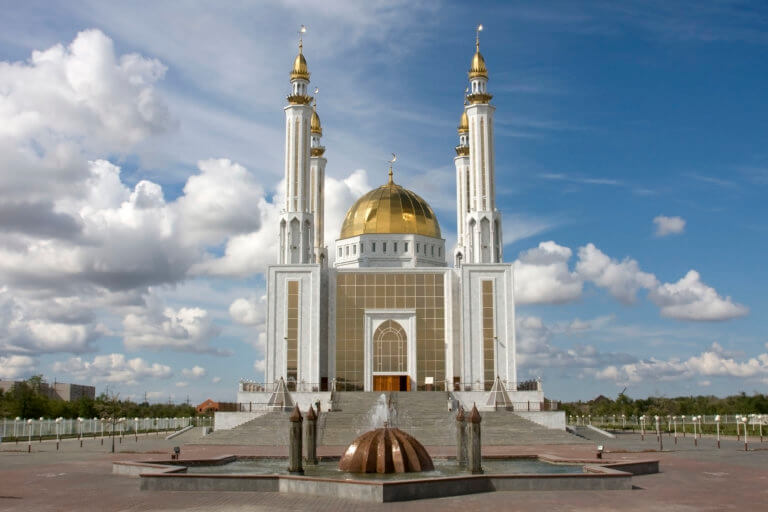
Aktobe
Aktobe is on the western end of the Kazakh Steppe, less than 100km from the Russian border. As the capital city of the Aktobe Region,
Senek Sands, also known as Tuyesu Sands, is an 11 x 30km area of dunes located halfway between Zhanaozen city and Boszhira. Barchan dunes cover the south and east corner, and the north and west quarters are desert shrubland.
In the 1960s, geotechnical engineers tapped into the freshwater aquifer beneath the Senek and Sauskan Sands, which facilitated the large-scale development of Zhanaozen’s oil fields. Water is crucial to the oil industry for processes like drilling and hydraulic fracturing, where it serves as a key component in cooling, lubrication, and the extraction of oil from underground reservoirs.
An average of ten barrels of water is required to produce one barrel of oil. Unsurprisingly, in a desert region like Mangystau, this has led to a drop in the water table and consequently killed off vegetation in the area, which is crucial to stabilising the sand. As a result, the dunes have grown in size – sometimes reaching 25m high – and encroached on Senek village, sometimes at a rate of 100m per year. Seventy-five kilometres to the north-west, the same issue exists between Ushtagan village and the Sauskan Sands, and Tushikuduk village and the Kyzylkum Sands on the Buzachi Peninsula.
Some residents even report entire villages disappearing under the shifting sands. In a 2014 Qazaq TV interview about desertification in Mangystau, an older Ushtagan resident said:
“When I come here, I sometimes think that my childhood was only in my dreams. There was my house, we had neighbours and played with children in our garden. There were two big trees and my father tied a swing between them. All children came to play at our house. Now I have nothing to remember from my childhood. There was nothing left. All was swallowed by sand.”
Fortunately, Kazakhstan’s Institute of Chemical Sciences stepped in to tackle the problem by offering to plant saxaul, to act as a barrier against the dunes. They also created ‘Superhuman’, an environmentally friendly fertiliser derived from brown coal that improves the root systems and growth of saxaul. Similar initiatives are in place around the Aral Sea region. According to a BBC interview with Orazbay Allanazarov, a forestry specialist, one fully grown saxaul tree can fix up to 10 tonnes of soil around its roots. The United Nations Development Programme’s Green Aral Sea afforestation project is one such successful example, having planted tens of thousands of saxaul bush on the former seabed.
Drive two hours east from Aktau to Kyzylsai village via Zhanaozen. Once there, follow the signs for Senek, which is 30km to the east. The turn-off for Shopan Ata Mosque is midway along this road, too. The dunes are north of the village and less than a kilometre to the south-east is Senek Necropolis.
Senek (Сенек): 43.3648, 53.3948
Senek Necropolis (Senek Qorymy/Сенек некрополь): 43.3559, 53.4022
Ushtagan (Üştağan/Уштаган): 43.8287, 52.7225
Tushikuduk (Tūşchyqūdyq/Тушикудук): 44.7364, 51.9675
Sauskan Sands (Sauysqan Qūmdary/пески Саускан): 43.7969, 52.8035
Kyzylsai (Qyzylsai/Кызылсай): 43.4548, 53.0394
1:200k Soviet map of the Senek Sands, indicated by the orange, tear-shaped area at the bottom of the map and marked as ‘Туесу’.
Short photostory about desertification in a second village called Ushtagan, in the Ryn Desert, northern Atyrau Region.
Historical overview of water and oil exploration in the Senek and Sauskan Sands.

Aktobe is on the western end of the Kazakh Steppe, less than 100km from the Russian border. As the capital city of the Aktobe Region,

Karynzharyk is an 85km long and 15km wide depression in the Ustyurt Nature Reserve. The nearest village is Ak-Kuduk, which is situated 25km to the

Tucked away inland of Sarytash Bay is the 10th-century Shakpak Ata, one of Mangystau’s most well-known historical-religious sites. Tauchik, a small village, is the nearest
Copyright © Planet Esoterica, 2024. No part of this site, www.planetesoterica.com, may be reproduced in whole or in part in any manner without the permission of the copyright owner. All rights reserved.
Made with 